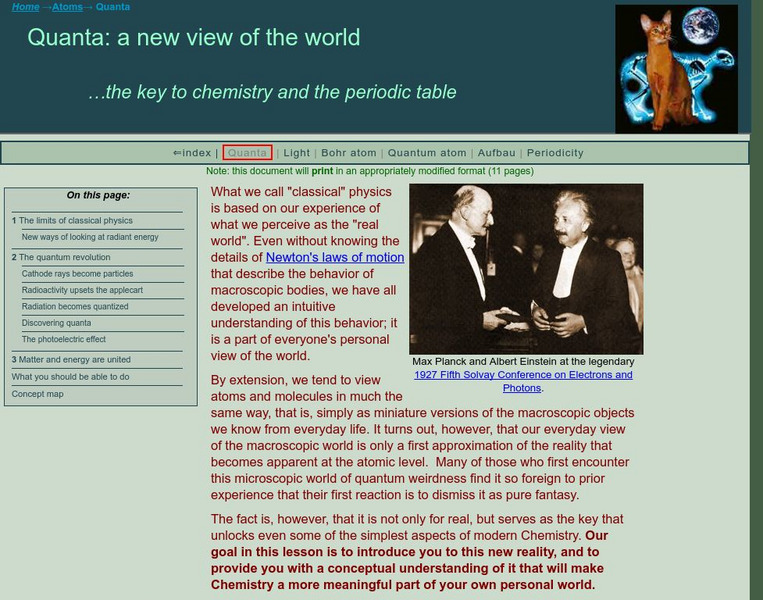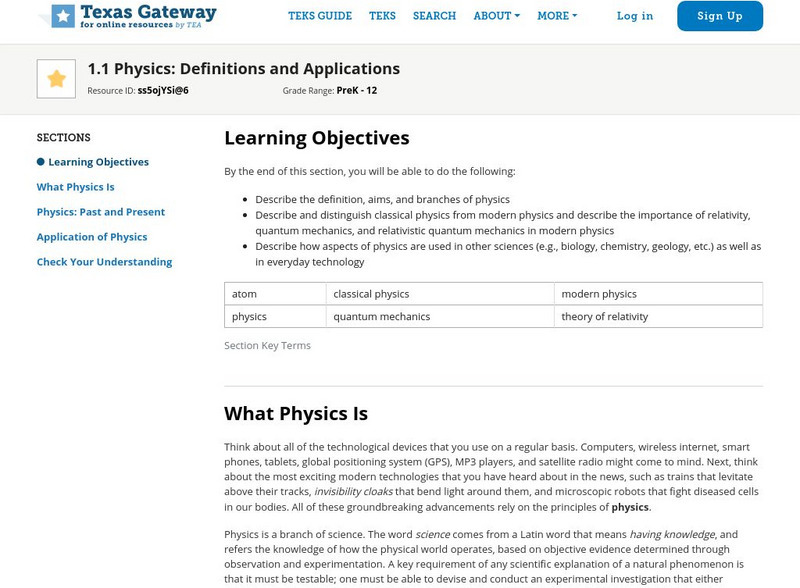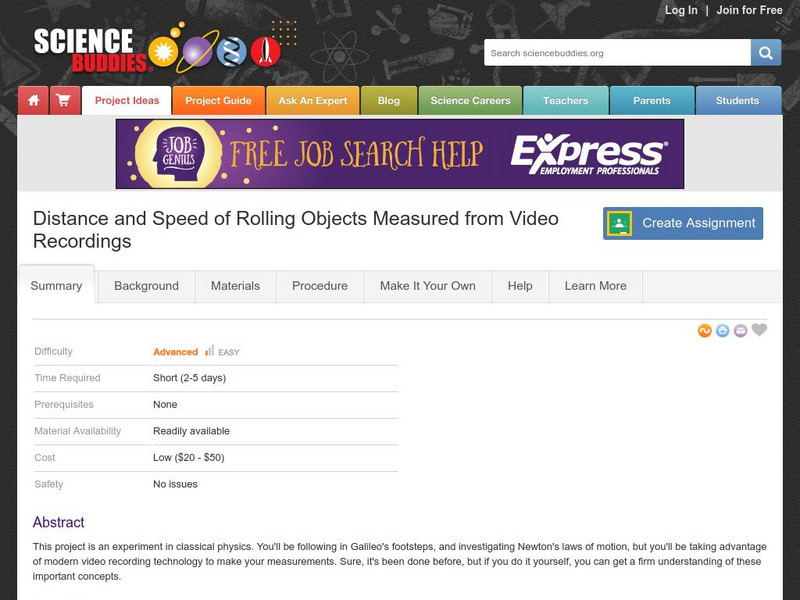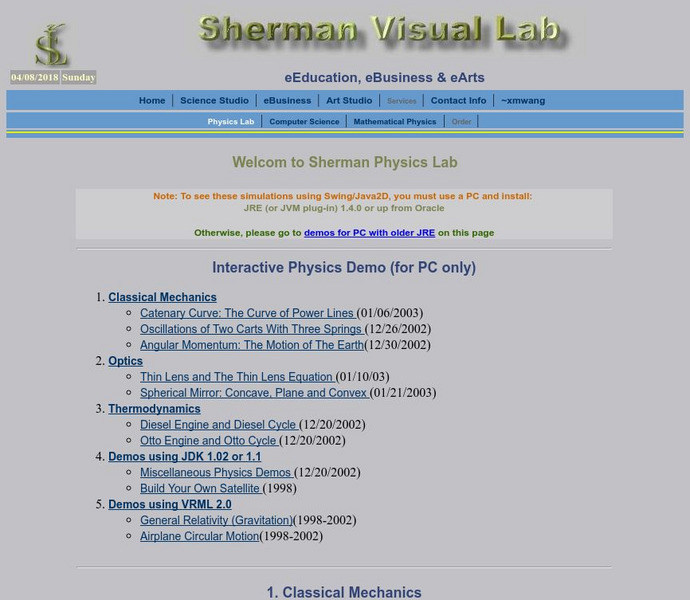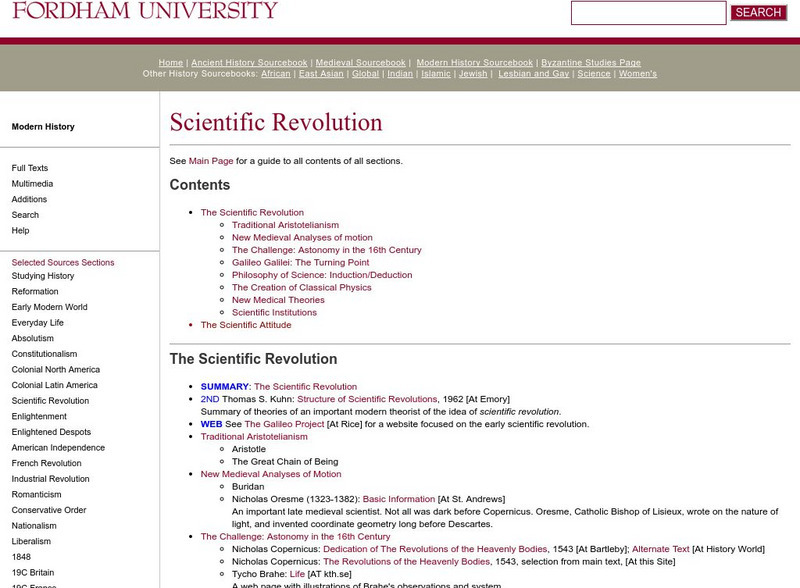Curated OER
Cultural Diversity
In this cultural diversity worksheet, students respond to 7 short answer questions and answer 14 fill in the blank questions regarding the components of culture.
Curated OER
Junkyard Wars: Air Movers
Students study Rube Goldberg machines. In this investigative lesson students design and build a machine that uses several steps to move an aluminum can.
Curated OER
The Play's the Thing: The Drama of Cyrano de Bergerac
Students practice dramatic 'living' through various drama activities. In this drama lesson, students define drama, view examples of dramatic elements in Cyrano de Bergerac and Roxanne, define characterization within the dramas, study the...
Curated OER
Mary Shelley's Frankenstein
Students complete close reading and analysis activities for Mary Shelley's Frankenstein. In this literature analysis instructional activity, students complete multiple close reading and analysis activities to evaluate the 19th century...
Curated OER
Mark Zuckerberg
For this famous people worksheet, students read a selection about the life of Mark Zuckerberg, then complete a variety of comprehension activities including synonym matches, fill-in-the-blank sentence completions, unscrambling words and...
Curated OER
Little House On The Prarie
Fourth graders focus on the family's journey from Wisconsin to Kansas and their life there among the Indians.
Curated OER
Human Inheritance
Students analyze genetic characteristics in a given family tree through the F2 generation. Students apply prior knowledge from Gregor Mendel's study with pea plants and his Laws of Heredity to answer questions.
Curated OER
Indi/Visual
Eighth graders take photographs for a photo essay contest. Using primary source documents, they review various types of artwork and discuss how some of the images have become commonplace. They use the internet to view examples of...
Curated OER
Transmitter Hunt
Students experiment with radio transmitters. In this transmission of waves lesson, students use an FM radio, an attenuate, and the frequency to locate a radio transmitter. Students discuss outcomes.
Simon Fraser University
Chem1 Virtual Textbook: The Limits of Classical Physics
Acting as a subtopic of the General Chemistry Virtual Textbook's section on Atoms and the Periodic Table, this site discusses the limits associated with classical physics. Topics covered include light and heat with additional information...
Texas Education Agency
Texas Gateway: Physics: Definitions and Applications
By the end of this section, you will be able to describe the definition, aims, and branches of physics; describe and distinguish classical physics from modern physics and describe the importance of relativity, quantum mechanics, and...
Massachusetts Institute of Technology
Mit: Open Course Ware: Courses: Physics: Classical Mechanics
College-level online course highlighting the study of classical mechanics. This course focuses on Newtonian mechanics, fluid mechanics, and kinetic gas theory. Course features include a 35 video lecture series by Walter Lewin. Also link...
CK-12 Foundation
Ck 12 Exploration Series: Simulations: Physics: Stadium Wave
[Free Registration/Login Required] A simulation that uses the classic sports stadium "wave" to learn about concepts important to wave motion and interference.
Other
University of Tennessee: Football Physics
Classical physics describes and predicts how things work in our everyday environment. Football falls well into the limits of classical physics. In football we encounter many situations where only a few interactions, maybe only one push...
Texas Education Agency
Texas Gateway: 1.1 Physics: An Introduction
By the end of this section, you will be able to do the following: Explain the difference between a principle and a law and Explain the difference between a model and a theory.
Walter Fendt
Walter Fendt: Apps on Physics
This collection by Walter Fendt (who also offers many applets on mathematics and astronomy) is large and comprehensive. Everything from classical mechanics to the theory of relativity and nuclear physics is covered. Numerous interactive...
Science Buddies
Science Buddies: Distance and Constant Acceleration
This project is an experiment in classical physics. You'll be following in Galileo's footsteps, and investigating Newton's laws of motion, using a metronome as your timing device. This resource will help you get a firm understanding of...
Science Buddies
Science Buddies: Distance and Speed of Rolling Objects
This project is an experiment in classical physics. You'll be following in Galileo's footsteps, and investigating Newton's laws of motion, but you'll be taking advantage of modern video recording technology to make your measurements. The...
Massachusetts Institute of Technology
Mit: Internet Classics Archive: Physics
This site from the Internet Classics Archive provides the full text of Aristotle's "Physics"; translated by R. P. Hardie and R. K. Gaye.
Other
Sherman Visual Lab: Physics Lab
Interactive lab that deals with various physics topics: classical mechanics, optics, and thermodynamics.
Internet History Sourcebooks Project
Fordham University: Modern History Sourcebook: Isaac Newton
This site from Fordham University links to excerpts of Newton's major works. Please scroll down to find the section on Newton titled "The Creation of Classical Physics." You will be able to actually read some of Newton's work! Read...
Libre Text
Libre Texts: Physics: What Was Wrong With Classical Mechanics?
An overview of many parts of classical mechanics theories and formulas from black body radiation to the Uncertainty Principle. A reference for equations.
American Association of Physics Teachers
Com Padre Digital Library: Open Source Physics: Driven Pendulum With Phase Space
Illustrate the physics of a pendulum with this simulated exercise which examines the variation of a moving pendulum, its phase space, and its Poincare section.
Physics Classroom
The Physics Classroom: 1 D Kinematics: Describing Motion Distance & Displa [Pdf]
A collection of high-school level physics problems with an emphasis on kinematics where students practice describing an object's motion.









